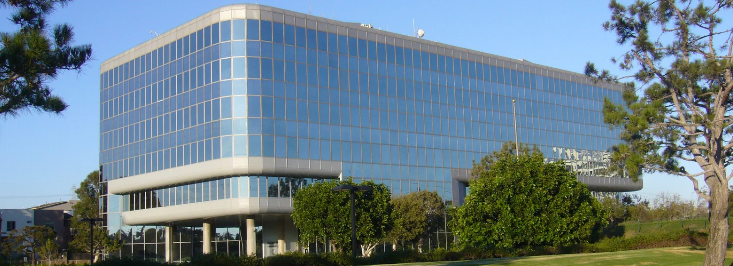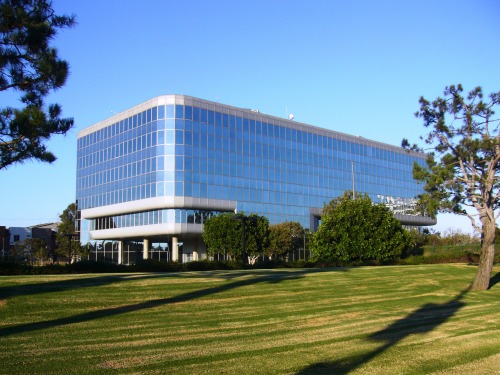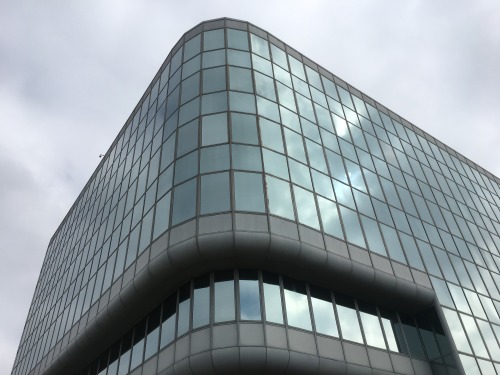
Blog
Protecting 1970s Landmark
February 13, 2020
The phrase “everything old is new again” is fitting for historic preservation work. Through the passage of time, places that once might have been derided and misunderstood come into their own and are “rediscovered.”
It happened with Victorian homes, for example, which were considered past their prime in the 1950s and ‘60s, and many were demolished in this time period. But those that remained came to be appreciated again by the 1970s and ‘80s. A similar storyline has followed Art Deco, Craftsman, and numerous other architectural styles. We generally lose a lot of these kinds of places as we wait for the public’s appreciation for them to catch up.
Often it is a younger generation that sees value in these “newer” buildings that are just emerging as the historic landmarks of the future. Now that the 1970s-era built environment is crossing the fifty-year threshold, enough time has passed to start understanding, recognizing, and protecting these places too.
OUR NEWEST CONSERVATION EASEMENT
With our The ‘70s Turn 50 initiative, this is a perfect time to share the news about our conservation easement, which happens to be a significant 1970s building.
The Federal Aviation Administration Building (FAA) in Hawthorne is one of the nation’s most significant examples of 1970s Late Modernism. It is now protected through a conservation easement held by the Conservancy. As an easement-holder, we ensure that any proposed changes to the exterior of the building and landscape conform to the Secretary of the Interior’s Standards for Rehabilitation (nationally recognized preservation standards).
When the FAA was completed in 1972, the nation was in the middle of a presidential scandal, the first-ever digital watch made its debut, and NASA’s Space Shuttle Program officially launched. The FAA and similar buildings from this time period represented a stark architectural departure, with a rounded, taut glass-and-aluminum-skinned façade. It looked more like a piece of monumental sculpture than a building intended to house federal office workers. From certain angles, the reflective glass building appears to hover above the ground as if an experimental aircraft. This design is fitting given Los Angeles County’s role in the early aerospace industry.
Despite its eventual construction in the 1970s, the design for the FAA dates to 1966, by architects César Pelli and Anthony J. Lumsden of Daniel Mann Johnson & Mendenhall (DMJM). Considered the first-designed Southern California building to have a mirrored skin, the FAA was not the first built. Pelli and Lumsden collaborated on experimental developments with new types of exterior cladding or “skin.” The idea was to wrap a building’s structural frame in a glass curtain wall façade that appeared as one continuous, uniform surface.
In 1976, Progressive Architecture magazine quoted Lumsden saying the FAA was “the first building in the country, I believe, that tried to do a lightweight sculptural surface, where the building goes over the top…under the bottom, and also around the corner.” The article also describes the FAA as an “anti-gravitational mass, not unlike a dirigible airship.” Its progressive design represented a significant step in the evolution of continuous, flexible membrane facades, leading to numerous examples built throughout the U.S. and world.
Anyone driving past the FAA and its busy intersection at 15000 Aviation Boulevard likely notices how this building stands out from others. It is set back from the corner with a vast open landscape and sited as if a “machine in the garden.” It is thoroughly futuristic, even today, nearly fifty years later. In 2010, Lumsden noted how important and integral the open landscape was to the design of the building. It frames the FAA with flat open lawn areas and undulating earthen berms intended to extend the sculptural effects of the building and serve a practical purpose of concealing surface parking. The Conservancy’s conservation easement protects both the FAA building and its landscape setting.
In 2015, at age 43, the FAA was officially listed in the National Register of Historic Places. Its contribution to the field of architecture is more than worthy of this level of recognition. Though still relatively young, the FAA was in need of a significant seismic retrofit and reinvestment. After considering its options, the General Services Administration (GSA), who manages the FAA and a massive portfolio of buildings owned by the federal government, ultimately decided to close and sell the building. Due to its status as a historic building, the planned sale prompted a federal historic review process called Section 106, established as part of the National Historic Preservation Act. This affords any significant historic building passing from federal to private ownership adequate, long-term protection. In this case, the best tool to accomplish this goal is a conservation easement.
The federal government officially closed the building in 2018, relocating its office workers and leaving the building empty. For more than a year, the Conservancy worked closely with the GSA to put in place the necessary provisions before the sale of the FAA could proceed. This included valuable assistance from the National Trust for Historic Preservation and the Advisory Council on Historic Preservation. On May 3, 2019, the GSA issued bids for the purchase of the FAA, with an online auction beginning on June 3 and ending on July 9.
In late November 2019, ownership of the FAA transferred to the winning bidder, Worthe Real Estate Group, based in Santa Monica. They plan to rehabilitate the FAA building and retain its original use as an office building. The conservation easement was officially placed on the building as a condition of the sale.
The Conservancy was working closely with Worthe as they began planning for tenant improvements, restoration of the glass skin of the building, and necessary upgrades. We were very excited to see this building rehabilitated and put back into its original use, demonstrating how old can indeed become new again. This easement also marks the Conservancy’s first postwar historic building, let alone from the 1970s, to join our growing portfolio of conservation easements!
Click here to learn more about the Conservancy’s easement program.

